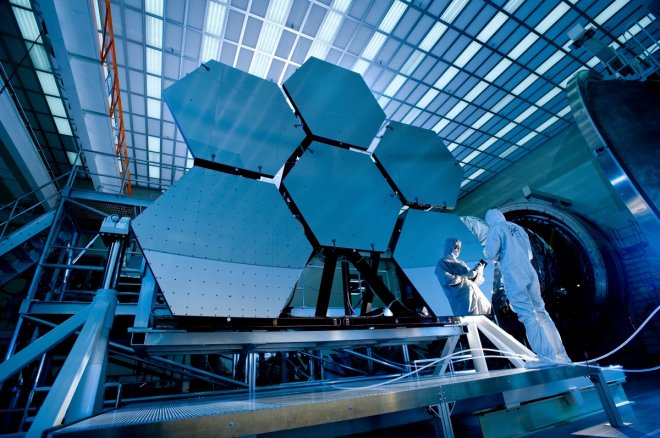
NASA has delayed the scheduled launch of its James Webb Space Telescope, which costs $8.8 billion, from October 2018 to the spring of 2019. The agency has cited spacecraft-integration difficulties to be the reason behind the holdup, reported Deccan Chronicle.
"The change in launch timing is not indicative of hardware or technical performance concerns," said Thomas Zurbuchen, an associate administrator for NASA's Science Mission Directorate, stated the report. "Rather, the integration of the various spacecraft elements is taking longer than expected," Zurbuchen added.
James Webb Space Telescope, the successor to the prominent Hubble Space Telescope, will now be launched somewhere between March and June 2019 from French Guiana. A schedule assessment of the rest of the integration and test activities will take place before the final launch, said NASA.
The 6.5-metre diameter infrared-optimised James Webb is going to be the most powerful space telescope that has even been built in the world. According to NASA, it would be of assistance to thousands of astronomers across the globe. "Webb's spacecraft and Sun-shield are larger and more complex than most spacecraft," said Eric Smith, programme director for the James Webb Space Telescope at NASA. "The combination of some integration activities taking longer than initially planned, such as the installation of more than 100 Sun-shield membrane release devices, has meant the integration and testing process is just taking longer," added Smith.

"Webb's spacecraft and Sun-shield are larger and more complex than most spacecraft," said Eric Smith, programme director for the James Webb Space Telescope at NASA. "The combination of some integration activities taking longer than initially planned, such as the installation of more than 100 Sun-shield membrane release devices, has meant the integration and testing process is just taking longer," added Smith.
Also Read: Watch 20-year Cassini mission end as Nasa probe plunges into Saturn
It has been specially designed to study an exceptionally wide range of astrophysical phenomena, such as the first stars and galaxies that were created, the atmospheres of nearby planets outside of our solar system, objects within our solar system and so on.
During the recent routine schedule assessment by NASA, the spacecraft itself experienced delays during its integration and testing. However, all these tests of the telescope and the spacecraft have, till date, showed that the mission is at par with its expected performance level, stated the agency.
"Considering the investment NASA has made, and the good performance to date, we want to proceed very systematically through these tests to be ready for a Spring 2019 launch," said Eric Smith.
The international project Webb is led by NASA in partnership with ESA and the Canadian Space Agency.









